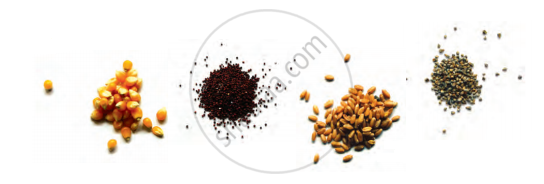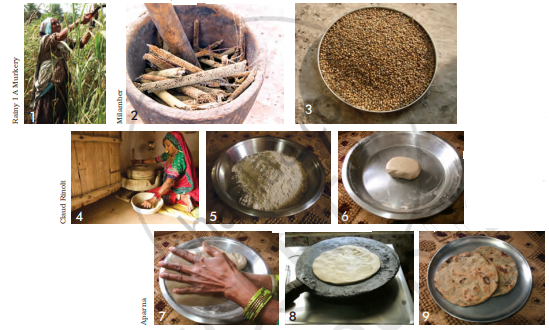Advertisements
Advertisements
Question
There have been many changes over time, in our food. What can this mean? Use the seed story and what you know from your elders to explain.
Solution
There have been many changes in our food. Earlier, people used to eat chapatti of different kinds of grains but now wheat is the main ingredient of chapatti. My mother says that when she was a child, her father used to buy wheat grains. The wheat grains were washed and dried in the sun. Then it was taken to a chakki to make flour. Now, we buy packed atta (flour) and I have seen wheat grains in pictures only.
Most of the children of my age would not recognize a particular grain. For example; I was surprised when I learned how does the rice grain look with a cover on it.
Many of us now use instant food, instead of traditional food. I think people will forget how to cook some of the traditional dishes.
APPEARS IN
RELATED QUESTIONS
Have you eaten roti made from bajra or jowar? Did you like these?
Which are the different festivals related to farming, celebrated in different seasons? Find out more about anyone such festival and write in your notebook –
The name of the festival, in which season is it celebrated, in which states of India, what special foods are made, is it celebrated only at home with the family, or together with many people.
Talk to the elders in your family and find out if there were some special foods cooked earlier that are not cooked anymore?
Can you recognize these grains?

The bajra seed saw differences in the way Damjibhai and Hasmukh did farming (for example, in irrigation, ploughing, etc). What were these differences?
What kind of progress would you like to see in your area?
Damjibhai’s son Hasmukh chose to become a farmer like his father. Hasmukh’s son Paresh is not a farmer, but a truck driver. Why would he have done so?
What questions come to your mind about farmers and farming? Write some questions in your group and ask a farmer. For example, how many crops do they grow in a year? Which crop needs how much water?
What can you see in each picture on the next page?
In picture 2 you can see the bajra cobs in the mortar (okhli, used for crushing). The cobs are crushed with a pestle (moosli) and the seeds are separated from the cob. You can see the separated seeds in picture 3. Now this work is also done by big machines, like threshers. We call both these different ‘technologies’ – using our hands or big machines – to crush the seeds.
What technology could have been used to cut the stem in picture 1? What do you think is being done in the grinder (chakki ) in picture 4? What ways (technologies) would have been used to do the work shown in pictures 5 and 6? You can see that the dough is ready in picture 6. When do you think a sieve (chhalni ) would have been used? Discuss each step in detail, in any language you wish to use.

What would happen if all the farmers were to use only one kind of seed and grow only one kind of crop?
